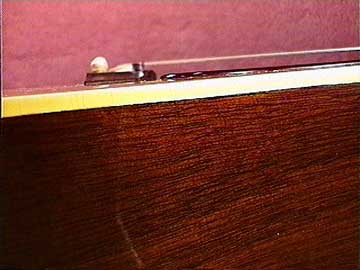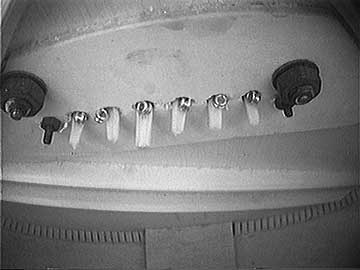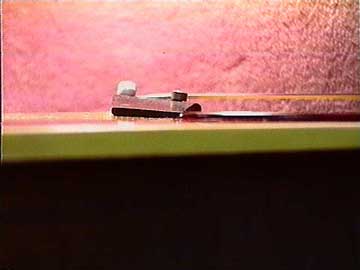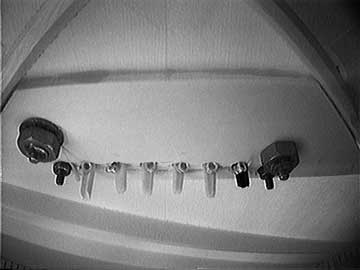Good Plate, Bad Plate
© Frank Ford, 2/16/99; Photos by FF, 4/5/99
First, a look at a healthy adjustable bridge:

The top of the guitar is relatively flat, and shows only the normal rise behind the bridge as a result of the string tension.
Looking inside, you can see that the bridge pins are situated about 1/2" from the back edge of the bridge plate:

This way, there's a bit of bridge plate sticking out behind the bridge to help stabilize the top. It's important, because, unlike virtually all other bridges, the "backwards" Gibson bridge has the row of bridge pin holes right at the back edge. These holes weaken the top in that area, and can allow a sort of "folding" action, especially in heat stress, when the bridge glue joint is weakened.
Here's the same style bridge, but it doesn't look so good:

The top has distorted behind the bridge, and is pulling up dramatically, allowing the bridge to tip forward under the load of the string tension.
Look underneath:

See how the bridge pins are right at the back edge. The bridge plate certainly has no stabilizing effect at the back edge, so it's not surprising to see the top distortion on this guitar.
Too bad the factory couldn't have been more consistent in bridge plate placement.
Back to Hummingbird Bridge Upgrade